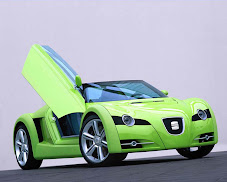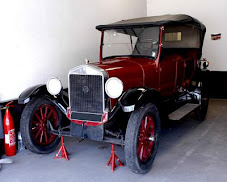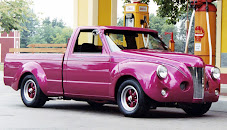| Maserati Biturbo |
|---|
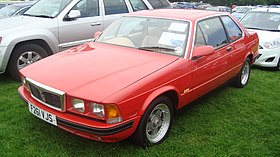
Maserati Biturbo (228)
|
| Overview |
|---|
| Manufacturer | Maserati |
|---|
| Production | 1981–1994 |
|---|
| Assembly |
- Coupé/Saloon:
Modena, Italy (Maserati)
- Spyder:
Terrazzano di Rho, Italy (Zagato)
|
|---|
| Designer |
- Pierangelo Andreani
- Marcello Gandini (1988 and 1991 facelifts)
- Zagato (Spyder)
|
|---|
| Body and chassis |
|---|
| Class | Grand tourer (S) |
|---|
| Body style |
- 2-door 2+2 coupé
- 4-door sedan/saloon
- 2-door spyder
|
|---|
| Layout | Front-engine, rear-wheel-drive |
|---|
| Powertrain |
|---|
| Engine |
- 2.0 L twin-turbocharged 90° V6
- 2.5 L twin-turbocharged 90° V6
- 2.8 L twin-turbocharged 90° V6
|
|---|
| Transmission |
- 5-speed ZF manual
- 3-speed automatic
- 4-speed ZF automatic
|
|---|
| Dimensions |
|---|
| Wheelbase |
- 2,514 mm (99.0 in) (coupé)
- 2,600 mm (102.4 in) (saloon)
- 2,400 mm (94.5 in) (Spyder)
|
|---|
| Length |
- 415 cm (163.4 in) (coupé)
- 440 cm (173.2 in) (saloon)
- 404 cm (159.1 in) (Spyder)
|
|---|
| Width |
- 171 cm (67.3 in) (coupé, Spyder)
- 173 cm (68.1 in) (saloon)
|
|---|
| Height |
- 131 cm (51.6 in) (coupé, Spyder)
- 136 cm (53.5 in) (saloon)
|
|---|
| Chronology |
|---|
| Predecessor | Maserati Merak |
|---|
| Successor | Maserati Ghibli (AM336)
Maserati Quattroporte IV |
|---|
The Maserati Biturbo was a family of luxury grand tourers produced by Italian automotive manufacturer Maserati between 1981 and 1994. The original Biturbo was a two-door, four-seater notchback coupé (of somewhat smaller dimensions than the BMW 3 Series of the time) featuring, as the name implies, a two-litre V6 engine with two turbochargers and a luxurious interior.
The car was designed by Pierangelo Andreani, Chief of Centro Stile Maserati up to 1981, somewhat influenced by the design of the then recent Quattroporte III (penned by Italdesign Giugiaro).
All Maserati models introduced from the Biturbo's inception in 1981 until 1997 were based on the original Biturbo architecture.
History
When Alejandro de Tomaso acquired Maserati in 1976, he had ambitious plans for the marque. His plan was to combine the prestige of the Maserati brand with a sports car that would be more affordable than the earlier high-priced models that had traditionally made up the Maserati range. In fact, the company ceased making sports cars developed under Citroën ownership altogether under Dr Tomaso's ownership, like the Bora and Khamsin.

Maserati Biturbo (North America)
The Biturbo was initially a strong seller and brought Italian prestige to a wide audience, with sales of about 40,000 units. Sales figures fell in subsequent years. De Tomaso also used another of his companies, Innocenti, to produce body panels of the car and also to provide final assembly. De Tomaso later sold Maserati to Fiat when he suffered losses who grouped the company with their erstwhile rival Ferrari.
The Biturbo is number 28 in the BBC book Crap Cars and in 2007 was selected as Time's worst car of 1984, although they ranked the Chrysler TC by Maserati as a "greater ignominy".

Maserati Biturbo (Racing version)
The Biturbo competed unsuccessfully in the British Touring Car Championship in the late 1980s, the European Touring Car Championship and the World Touring Car Championship (1987).
Gandini's first restyling
Between 1987–89 a facelift was phased designed by Marcello Gandini, which helped to soften the sharp bodylines present on the original design. The redesign included a taller and more rounded grille with mesh grille and bonnet, aerodynamic wing mirrors and 15" disc-shaped alloy wheels, now mounted on 5-lug hubs. Some models received the wraparound bumpers with integral foglights and the deep sills introduced with the 2.24v.
Gandini's second restyling

Maserati Biturbo (1991 Facelift)
In 1991, the entire lineup was restyled for a second time, again by the hand of Marcello Gandini; the design features introduced with the Shamal were spread to the other models. Gandini developed an aerodynamic kit that included a unique spoiler at the base of the windscreen hiding the windshield wipers, a rear spoiler, and side skirts. The new two-element headlights used poliellypsoidal projectors developed by Magneti-Marelli. Inset in body-colour housings, they flanked a redesigned grille, slimmer and integrated in the bonnet; the 1988 bumpers were adopted by all models. The 15" disc-shaped alloys were replaced by new 16" seven-spoke wheels, with a hubcap designed to look like a centerlock nut. The second facelift was referred to as nuovolook.
Specifications
The cars in the Biturbo family were of unibody steel construction, with a conventional layout of front-longitudinally mounted engine and gearbox. Suspension was of the MacPherson strut type upfront and semi-trailing arms at the rear, with coil springs, double-acting dampers and anti-roll bars on both axles. The differential and rear suspension arms were supported by a subframe.
Engines

12-valve Biturbo V6 engine
The Maserati Biturbo was the first production car with a twin-turbocharged engine. It also featured the first production car engine with three valves per cylinder. The aluminium 90-degree SOHC V6 was a completely new design even though roughly based on the 2.0 L Merak engine, itself based on earlier V8 Formula One Maserati engines, designed by Giulio Alfieri. The 2-litre version featured wet aluminium sleeves coated with Nikasil. The last street version featured over 150 hp/litre and 140 lb⋅ft (190 N⋅m)/litre of torque.
In Italy, new cars with engine displacement over 2,000 cc were subjected to a 38% value added tax, against 19% on smaller displacement cars. Therefore, throughout the Biturbo' production run, there both two-litre models aimed mainly at the domestic market and "export" versions, initially with a 2.5 L V6 engine and later, a 2.8 L V6 engine. The carbureted 2.5 L engine produced 185 hp (138 kW) and 208 lb⋅ft (282 N⋅m) of torque in North American specification and 192 hp (143 kW) and 220 lb⋅ft (298 N⋅m) of torque in European specification.

1985 Maserati 2.5L 18V Engine
In 1984 and 1985, the 2.5 L V6 models utilized a single Weber DCNVH carburetor under a smooth aluminum alloy plenum fed by twin IHI turbo chargers (one per bank of cylinders). Maserati, U.S. dealers, and sports car enthusiasts began experimenting with intercoolers for which many variants were fitted and mutually endorsed by Maserati. Intercoolers included air-to-air (two variants: top mounted assembly which was not as efficient as the separate side-mounted versions) and water-to-air intercoolers, all produced by Sparco. In 1986, the 2.5 L V6 models switched to a Weber 34DAT carburetor which was proven to be less efficient and more problematic to maintain than the Weber DCNVH used previously. On initial viewing of the 1986 Biturbo engine bay, the aluminum alloy plenum is finned with a slightly different footprint and the intake manifold was specific for that model. Similar experimentation with intercoolers and placement continued through 1986 models. However, the side-mounted water-to-air intercooler became the standard variant utilized until late 1986 / early 1987 when the intercoolers were placed, by the Maserati factory, outside the engine bay located in front of the radiator where they remained throughout the remaining models in the Maserati Biturbo family tree.
Fuel injection was fitted in 1987 raising power to 187 hp (139 kW) on North American models.
In 1989 the enlarged 2.8 L engine raised the power to 225 hp (168 kW) and 246 lb⋅ft (334 N⋅m) of torque for North America and 250 PS (184 kW; 247 hp) for Europe.
A 1,996 cc DOHC 36-valve (6 valves per cylinder) V6 engine was developed for the Biturbo but never manufactured.
| Engine type | Displacement | Valvetrain | Fuel system | Model(s) |
|---|
| AM 452 | 1,995 cc | 18 valves | Carburetor | Biturbo, Biturbo S |
| AM 453 | 2,491 cc | 18 valves | Carburetor | Biturbo E |
| AM 470 | 1,995 cc | 18 valves | Fuel injection | Biturbo i |
| AM 471 | 1,995 cc | 18 valves | Fuel injection | Biturbo Si, 222, 4.18v., Spyder |
| AM 472 | 2,491 cc | 18 valves | Fuel injection | Biturbo i 2500 |
| AM 473 | 2,790 cc | 18 valves | Fuel injection | 228, 430, 222 E, Spyder 2800, Karif |
| AM 475 | 1,995 cc | 24 valves | Fuel injection | 2.24v., 4.24v., Spyder III 2.0 |
| AM 477 | 2,790 cc | 24 valves | Fuel injection | 222 4v., 430 4v. |
| AM 490 | 1,996 cc | 24 valves | Fuel injection | Racing, Barchetta Stradale |
Biturbo coupé (Tipo AM331)
Biturbo
An early Biturbo, showing the first design of alloy wheels.
The Biturbo was a two-door 2+2 coupé, introduced in December 1981.It was powered by a twin-turbo V6, producing 180–205 hp (134–153 kW). The Biturbo name disappeared when the car was significantly redesigned in 1988. After 1994, the two-door coupé was again significantly reworked and became the Ghibli.
In July 1983, Maserati launched the sporty Biturbo S, for the Italian market only. Power was increased by 25 PS (18 kW; 25 hp) to 205 hp (153 kW; 208 PS) at 6,500 rpm, courtesy of increased turbo boost and twin intercoolers which fed fresh air by two NACA ducts in the bonnet. The chassis was updated as well with lowered suspension and new, wider 6½Jx14" magnesium alloy wheels, painted gunmetal grey with silver center and lip. The S was recognizable by its black mesh grille and the external trim (grille frame, headlight housings, window surround and Maserati badges on the C-pillar) finished in a dark bronze shade instead of chrome. The customer could only choose between two paint schemes: silver or red, both paired to the lower half of the body in contrasting metallic gunmetal grey. In the same year, the 2.5-litre Biturbo 2500 or Biturbo E (for Export) was also introduced, and was joined some twelve months later by the Biturbo ES with 205–196 hp (153–146 kW), respectively in European- or catalysed US-specification. In 1985, all models received updates and were renamed Biturbo II, Biturbo S II and Biturbo E II. The cylinders were now Nikasil-coated, a more capacious fuel tank was fitted and a Sensitork limited slip differential replaced the earlier Salisbury clutch. The second series Biturbo was recognizable by its new 6"Jx14" wheels similar in design to the Biturbo S's; the S II wheels had fully painted faces, without the silver center.
1986 brought a major change: carburation gave way to Weber-Marelli fuel injection, and the domestic models were now known as the Biturbo i and Biturbo Si. Power increased across the range, albeit at some loss of throttle response. The original square instrument cluster (from 1983 - 1985) was changed in 1986 one with a rounded shape. The intercoolers were moved from under the bonnet to a front-mounted position directly behind the grille, making the NACA ducts on the Si's bonnet merely decorative. In 1986 an Italy-only special edition of the Si called the Biturbo Si Black was introduced, whose main feature was a black on metallic grey paint scheme.105 were made until 1988. Performance was the same as for the regular Si.In 1987, Maserati launched the final car to wear the Biturbo badge, the U.S only 2.5 litre export market model Biturbo (E) Si Black. with black on metallic grey paint scheme and special interior trim. Only a total of 25 cars were known to have been produced for the U.S. market.
222
In 1988, with the models receiving a facelift, the Biturbo name was dropped in favour of
222—meaning 2-door, 2-litre engine and 2nd generation. The car carried all the visual clues of Gandini's signature design language, with a more rounded grille and bonnet, different wing mirrors and a rear spoiler. The engine size of the
222 E export model grew from the Biturbo's 2.5-litre to 2.8-litres. A mixed velour-leather interior was standard on the domestic models, while export markets got leather upholstery as standard.
[5]
1990 saw the arrival of the 2.8 L 222 SE, heir to the Biturbo ES. It inherited the latter's limited paint finish availability (red, silver or black) and the dark trim and grille, while modern aprons and side skirts (blacked out as well) came from the 2.24v.
After just a year, the 222 SE was replaced by the restyled 222 SR; the SR offered adaptive suspension as an option. Simultaneously the very similar 222 4v. joined the lineup; it was a 222 SR with a 2.8 L four-valve engine, the first DOHC car in the direct Biturbo E lineage. It featured wider, 16-inch, 7-spoke alloy wheels.
2.24v.
In December, 1988 Maserati unveiled the most powerful variant of the two-litre models: the 2.24v., powered by the new four-valve head engine. The 2.24v. was the first model to use the more modern wraparound front and rear fascias with integrated foglights, and deep side skirts. It was also distinguished by the 14" disc shaped alloy wheels, black grille and trim treatment, rear deck spoiler and lower body two-tone paint. The bonnet was adorned by two reversed NACA ducts to extract hot air from the engine bay, as on the Karif. In 1991 Gandini's restyling transformed the 2.24v. into the 2.24v. II. The new series cars were fitted with a catalytic converter, and got Meccanica Attiva suspension on all four wheels as standard. Production of the 2.24v ceased in 1993.
Racing

A 1991 Racing at Magny-Cours
The Maserati Racing (Tipo 331) was a more potent variant of the 2.24v. with a higher power output, and was meant as an intermediate model underneath the more aggressive Shamal. It was first revealed to the press in December 1990, only 230 units were built from 1991 to 1992 and all were meant for the Italian market only. Later, several units could be found exported across Europe (France, Sweden, Denmark, Germany and the Netherlands); limited documentation was available, which made homologation in some countries (still) a huge administrative challenge.
The lowered, electronic KONI shock absorbers allowed to adjust damping on four settings, allowing for comfort or road handling at the flick of a switch. This is combined with a five-speed manual gearbox manufactured by Getrag and a limited slip differential "Ranger" from Maserati but suspected to use Quaife technology. The choice of colour of the Racing was limited to red or black. On the interior, the only change was the paneling, painted dark grey (carbon fiber grey) instead of being wood trimmed.
Combined with new settings on the two engine controllers from Magneti Marelli, in charge of the ignition, the fuel injection and the turbo boost management, allowed the power to increase to 283 hp (211 kW; 287 PS) at 6,250 rpm with a specific output of 142 hp/l. The torque is 374 N⋅m (276 lb⋅ft) at 4,250 rpm. This engine was given the designation AM 490 in the Maserati engine reference book. The engine was made compatible with lead-free gasoline. Induction consists of two IHI water-cooled turbochargers with two air-to-air intercoolers. Changes from the 2.24v's engine include a new, lighter crankshaft, new exhaust valves (sodium filled for improved heat dissipation), new combustion chambers, new lighter Connecting rods, new lighter forged aluminium pistons, and new IHI turbochargers.
- Max. speed: 256 km/h (159 mph)
- 0–100 km/h (0–62 mph): 5.9 s.
- 0–1,000 m (0.00–0.62 mi): 25.60 s.
Versions and engines
| Model | Years | Engine | Displacement | Power | Fuel system | Notes | Units produced |
|---|
| Biturbo | 1981–85 | V6 OHC | 1,996 cc | 180 hp | Carburetor | Italy only | 9,206 |
| Biturbo E | 1983–85 | V6 OHC | 2,491 cc | 185 hp | Carburetor | | 4,577 |
| Biturbo S | 1983–86 | V6 OHC | 1,996 cc | 205 hp | Carburetor | Italy only (few in France) | 1,038 |
| Biturbo ES | 1984–85 | V6 OHC | 2,491 cc | 205 hp | Carburetor | | 1,480 |
| Biturbo II | 1985–87 | V6 OHC | 1,996 cc | 180 hp | Carburetor | Italy only | – |
| Biturbo S 2.5 | 1984–88 | V6 OHC | 2,491 cc | 196 hp | Carburetor | Catalysator | – |
| Biturbo E II 2.5 | 1985–87 | V6 OHC | 2,491 cc | 185 hp | Carburetor | Catalysator | – |
| Biturbo S II | 1985–86 | V6 OHC | 1,996 cc | 210 hp | Carburetor | Italy only | – |
| Biturbo i | 1986–90 | V6 OHC | 1,996 cc | 188 hp | Fuel injection | Italy only | 683 |
| Biturbo Si | 1986–88 | V6 OHC | 1,996 cc | 220 hp | Fuel injection | Italy only | 992 |
| Biturbo Si Black | 1986–88 | V6 OHC | 1,996 cc | 220 hp | Fuel injection | Italy only | 450 |
| Biturbo Si 2.5 | 1987–91 | V6 OHC | 2,491 cc | 188 hp | Fuel injection | Catalysator | 430 |
| 2.24v. | 1988–92 | V6 DOHC | 1,996 cc | 245 hp | Fuel injection | Italy only | 1,147 |
| 222 | 1988–90 | V6 OHC | 1,996 cc | 220 hp | Fuel injection | Catalysator, Italy only | 1,156 |
| 222 E | 1988–90 | V6 OHC | 2,790 cc | 250 hp | Fuel injection | | 722 |
| 1988–93 | V6 OHC | 2,790 cc | 225 hp | Fuel injection | Catalysator |
| 222 SE | 1990–91 | V6 OHC | 2,790 cc | 250 hp | Fuel injection | | 210 |
| 1990–91 | V6 OHC | 2,790 cc | 225 hp | Fuel injection | Catalytic converter in US (225 hp) |
| 2.24v. II | 1991–93 | V6 DOHC | 1,996 cc | 240 hp | Fuel injection | Catalysator, Italy only | 254 |
| 222 SR | 1991–93 | V6 OHC | 2,790 cc | 225 hp | Fuel injection | Catalysator | – |
| 222 4v. | 1991–94 | V6 DOHC | 2,790 cc | 279 hp | Fuel injection | Catalysator | 130 |
| Racing | 1991–92 | V6 DOHC | 1,996 cc | 285 hp | Fuel injection | | 230 |

Rear view of a Biturbo 420 saloon
Two years after the Biturbo's introduction a four-door version was unveiled. In comparison to the coupé, the saloon sat on a 8.6 cm (3 in) longer wheelbase and had a more pronounced rear overhang. While keeping a resemblance with the rest of lineup, only the nose and bonnet were shared between the equivalent two and four-door models; all the bodywork from the A-pillar to the rear is specific to the saloons. Due to the longer wheelbase and added luxury components, the weight increased by 100 kg (220 lb). Most of the four-door Biturbos have slightly less power than their two-door counterparts, due to the different routing of the exhaust system.
420 and 425
The first four-door Biturbo introduced was the 425 (1983–86), equipped with the "export" 2.5 litre engine. In 1984, the 425 (along with the two-door models) received a new dashboard. Two years later, a two-litre version of the 425, the 420 (1985–86), was added for the domestic market, together with the more powerful 420 S. The 420 S sported improved handling, the twin intercooled engine and the same aesthetic accoutrements of the Biturbo S: dark finish trim, two-tone paint, two-tone wheels and NACA ducts on the bonnet, delivering fresh air to the intercoolers. Like their two-door siblings in 1986, the saloons were updated with the Weber fuel injection, thus spawning the 425 i (1986–89), 420 i (1985–87) and 420 Si (1985–87). The latter featured a somewhat more restrained styling than its predecessor.
430
In 1986, Maserati launched the high-performance version of the Biturbo' saloon called the 430 (1986–1994). It was the flagship variant of the saloon range, which debuted the largest 2.8-litre version of the Biturbo engine. The 430 was distinguished by 15" 5-lug disc alloy wheels and a more rounded grille and hood, that later found their way to the rest of the lineup with the first 1988 facelift. The 430 was considered to be a full grand tourer, with standard leather upholstery and walnut veneered steering wheel rim, dashboard, door panels, gear shift knob along with the handbrake lever. 1991 saw the introduction of the restyled 430 4v. (1991–1994), powered by the latest 24-valve engine – as the "4v." suffix implied. As the top of the range 2.8 L saloon, the 430 received the full aerodynamic package, including a discreet spoiler on the trailing edge of the bootlid. The regular 430 variant was updated as well (gaining new bumpers) and remained on sale alongside its four-valve counterpart.
422
As the Biturbos were replaced by the 222s, the 420s gave way to the 422 (1988–92). The 422 was basically a 420 Si with the 1988 restyled grille, wing mirrors and wheels.
4.24v.
The 1990–1992
4.24v. was the four-door companion of the 2.24v. This new subfamily of the Biturbos paired Maserati's state-of-the-art four-valve 2.0 L V6 with the new
Meccanica Attiva suspension.
[5] The 4.24v. also adopted all of the exterior trappings of the 2.24v., including black trim and grille, black deep side skirts and a small spoiler on the boot. In 1991 the 4.24v. was subjected to the restyling alongside the rest of the range, becoming the
4.24v. II (1991–1939). Catalytic converters meant power was decreased to a little extent in comparison with the previous model.
4.18v.
The 4.18v. was launched in December 1990 and was meant for the Italian market only. It was very similar to the 422, but utilised an engine with three-valve per cylinder heads. It was the first Biturbo to feature ABS as standard. With 77 examples made, it is the rarest in the entire Biturbo family.
[5]
Versions and engines
| Model | Years | Engine | Displacement | Power | Fuel system | Notes | Units produced |
|---|
| 425 | 1983–89 | V6 OHC | 2,491 cc | 200 hp | Carburetor | | 2,052 |
| 425i | 1987–89 | V6 OHC | 2,491 cc | 188 hp | Fuel injection | Catalysator | 320 |
| 420 | 1985–86 | V6 OHC | 1,996 cc | 180 hp | Carburetor | Italy only | 2810 |
| 420i | 1986–88 | V6 OHC | 1,996 cc | 185 hp | Fuel injection | | 1,124 |
| 420 S | 1985–87 | V6 OHC | 1,996 cc | 205 hp | Carburetor | Italy only | 254 |
| 420 Si | 1986–88 | V6 OHC | 1,996 cc | 210 hp | Fuel injection | | 524 |
| 430 | 1987–94 | V6 OHC | 2,790 cc | 225 hp | Fuel injection | Catalysator | 995 |
| 422 | 1988–92 | V6 OHC | 1,996 cc | 220 hp | Fuel injection | Catalysator | 978 |
| 4.18v. | 1990–92 | V6 OHC | 1,996 cc | 220 hp | Fuel injection | Catalysator | 77 |
| 4.24v. | 1990–92 | V6 DOHC | 1,996 cc | 245 hp | Fuel injection | Italy only | 384 |
| 4.24v. II | 1991–93 | V6 DOHC | 1,996 cc | 240 hp | Fuel injection | Catalysator | 490 |
| 430 4v. | 1991–93 | V6 DOHC | 2,790 cc | 279 hp | Fuel injection | Catalysator | 291 |
Biturbo spyder (Tipo AM333)

1987 US-specification Spyder
The convertible iteration of the Biturbo was designed and assembled by Zagato in Milan. It was Zagato's first work for Maserati since the A6G/2000 thirty years earlier.
Embo of Caramagna was first commissioned to develop a our-seater cabriolet version of the Biturbo, which was shown at the April 1982 Turin Auto Show, but their proposal never made it to production.
The Spyder was built on a 2.4 m (7.9 ft) wheelbase, some 11.4 cm (4 in) shorter than the coupé's. Still, since it is a strict two-seater with folding rear seats, the luggage space is larger than in the original Biturbo. It was on this short chassis that the sporty hardtop Karif was later developed. Overall, 3,076 were built over a ten-year period, setting a production record for Maserati Spyders.
The first Spyder was launched at the Turin Motor Show in 1984. It was offered with both the 2.0-litre and 2.5-litre "export" engine. Two years later, fuel injection was implemented and the car was now called the Spyder i. 297 were made with the 2.0 L engine and 122 with the 2.5 L engine.
In 1989, the Spyder received a facelift, known as Spyder i 1990 (or '90). The car received the full 1988 Gandini treatment, one year after the other models: rounded grille, fuller bumpers, aerodynamic wing mirrors and 15" wheels on five-lug hubs. As on the rest of the Biturbos, the export engine had the increased displacement of 2.8-litres. A four-speed automatic transmission was available on request.
The third series, or Spyder III, was introduced in 1991 in occasion of Gandini's second facelift that renewed the entire range. This included the new bonnet and grille, ellypsoidal headlights in body-colour housings, a spoiler at the base of the windscreen, deeper body-colour sills and 16-inch seven-spoke wheels. The Spyder IIIs were fitted with Maserati's Ranger limited slip differential Whereas the 2.0 L third series Spyder received 24-valve engines, 2.8 L cars still used 18-valves, thus remaining the only 2.8 L Biturbo model to never get a 4-valve head upgrade.
Versions and engines
| Model | Years | Engine | Displacement | Power | Fuel system | Notes | Units produced |
|---|
| Spyder | 1984–88 | V6 OHC | 1,996 cc | 180 hp | Carburetor | Italy only | 276 |
| Spyder 2500 | 1984–88 | V6 OHC | 2,491 cc | 192 hp | Carburetor | Catalysator | 1,049 |
| Spyder i | 1986–88 | V6 OHC | 1,996 cc | 185 hp | Fuel injection | | 297 |
| Spyder i 2500 | 1988–89 | V6 OHC | 2,491 cc | 188 hp | Fuel injection | Catalysator | 122 |
| Spyder i 1990 | 1989–91 | V6 OHC | 1,996 cc | 220 hp | Fuel injection | Catalysator, Italy only | 309 |
| Spyder i 1990 | 1989–91 | V6 OHC | 2,790 cc | 250 hp | Fuel injection | | 603 |
| 1989–91 | V6 OHC | 2,790 cc | 225 hp | Fuel injection | Catalysator |
| Spyder III | 1991–94 | V6 DOHC | 1,996 cc | 245 hp | Fuel injection | Italy only | 200 |
| 1991–94 | V6 DOHC | 1,996 cc | 240 hp | Fuel injection | Catalysator, Italy only |
| Spyder III 2800 | 1991–94 | V6 OHC | 2,790 cc | 225 hp | Fuel injection | Catalysator | 220 |
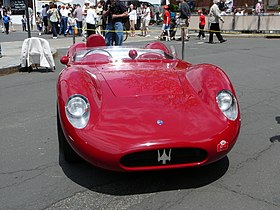































![Validate my RSS feed [Valid RSS]](valid-rss-rogers.png)








































